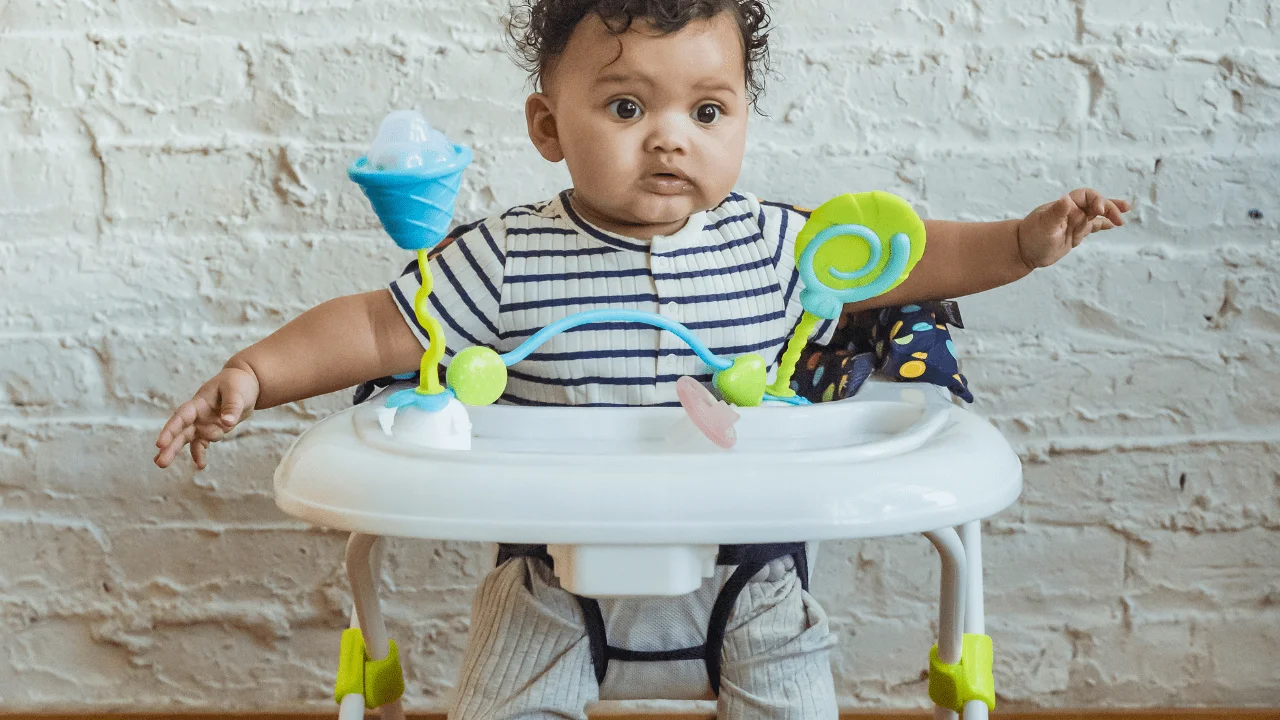
Experts say baby walkers aren’t safe – and they don’t help babies learn to walk faster, either.
Baby walkers are circular, wheeled toys with suspended seats. They’re designed so your baby’s feet can touch the ground while they’re seated, so they can propel themself around.
Even as new safety features have been implemented over the years, thousands of babies every year end up in emergency rooms and doctor’s offices from falling down stairs or bumping into furniture while in a walker.
Walkers on the market now are required to have “stair-fall protection” – either a gripping mechanism that keeps the walker from going over the edge of a stairwell or a design that prevents the walker from fitting through a doorway. Older walkers (such as those bought secondhand) don’t have these safety features.
But even with the extra safety features, experts say baby walkers aren’t safe to use. Walkers make babies taller, so they might be able to reach dangerous objects (like hot cups of coffee or knives on countertops) or touch a hot stove. Babies could also tip and fall over objects.
Activity centers and jumpers are much safer alternatives. And baby walking toys – which have wheels so babies can stand in front of them and push them along as they learn to walk – are safe to use.
If you’re looking for a toy that you can set your baby in and have a few moments to yourself, activity centers and freestanding jumpers will keep your baby occupied – and stationary, so you don’t have to worry about them wandering off. Both offer your baby plenty of opportunities to safely explore and practice their fine motor skills like grasping, grabbing, and shaking, as well as gross motor skills like standing and bouncing.
Experts recommend a 15 to 20-minute limit on time in a jumper or activity center, though, since your baby also needs plenty of floor time to practice their skills independently.
Baby walking toys – also called push toys – are great for when your baby can pull themself up, stand, and even cruise. They give your baby extra support and help them balance. Once they start taking steps, your baby can push the walking toy in front of them.
Just make sure the walking toy is sturdy enough that it won’t tip over if your baby uses it to pull themself up. Block off any stairways, as well as rooms you don’t want your baby to go in, and supervise your baby while they’re playing with the walking toy.
Do baby walkers help babies walk sooner?
No, and neither do activity centers, jumpers, or walking toys. In fact, research shows that babies who use a walker may actually learn to walk later than those who don’t.
Babies learn to walk in part by watching and understanding how their feet and legs move. Since most walkers have trays, babies can’t see what’s happening with their lower body and don’t get the information they need about their motor development.
Babies need to practice crawling, pulling themselves up, and cruising to learn how to walk – none of which they get to do if they’re in a walker.
Here are some good ways to encourage your baby to walk:
- Give your baby plenty of tummy time to help develop their core muscles.
- Let your baby work on strengthening their legs by holding them under the arms as they jump on your thighs.
- Once your baby is cruising around, encourage them to walk toward you by standing or kneeling in front of them and holding out your hands. Or, you can help them walk by holding their hand while they take steps.
Read more about


Add a Comment